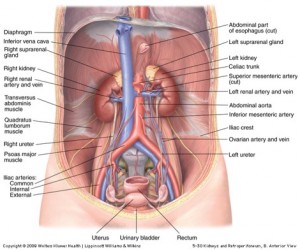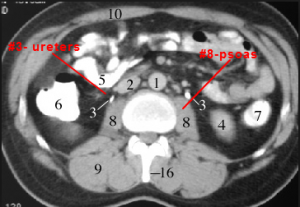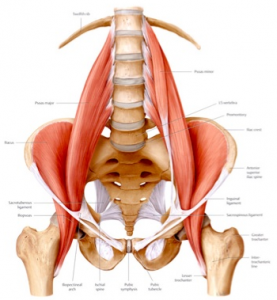I am pleased to introduce readers of the blog to Mona Nygren, a fellow psoas nerd from Sweden. Mona has written a guest post that is a follow up to a recent post I wrote about the psoas and the urinary bladder.
Mona does a great job explaining the relationship of the psoas to the ureters and kidneys, that I couldn’t quite understand how to get across. I am grateful to her for sharing this with the blog and educating me at the same time.
The pelvis made up of three large bones (two hip bones and sacrum), and the coccyx, form a ring. The third joint of this pelvic ring is in the front – the pubic symphysis (pubis joint)— is not as commonly mentioned as the ones in the back, the two sacroiliac joints. When the psoas muscle on one side pulls the pelvis out of its balance, the pressure on the front joints also increases.
This kind of pressure affects the bladder causing its nerves to go on alert. That often happens at nighttime when the nerves tend to make a show of their own. When I had this problem I was told to live with it. For many years I thought my chronic UTI (infection) was because of the bladder not emptying itself properly, leaving amounts of urine that increased the amount of bacteria. Years later, with the same bladder, but now with a happy psoas, I found another point of view.
When working properly the Psoas lets the kidney slides up and down when we walk. The fascia of the iIiopsoas muscle is in direct contact with the fascia or special membranes of the kidneys. The bladder connects with both kidneys via the ureters. When the psoas is strained it pulls on the ureters, which has an effect on the filling of the bladder as tension in the fascia leads to a disturbance in the muscle. Tension in the muscle leads to strain in the ureters. Although there is no inflammation of the kidneys, it still leads to a so called dysfunction when the kidney and the fascia are very tense. And for good health, we don’t need that stress.



